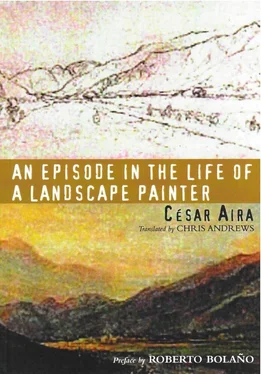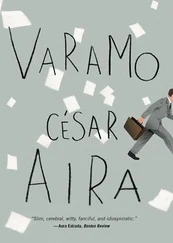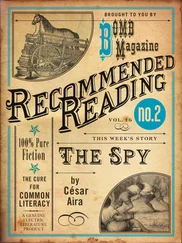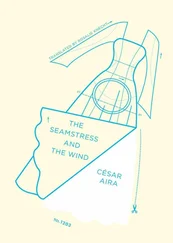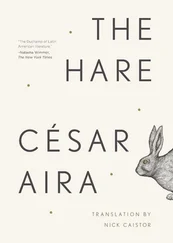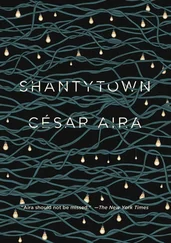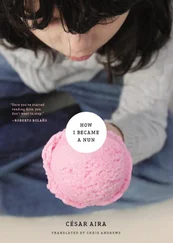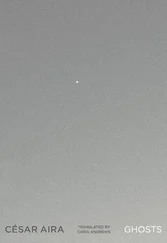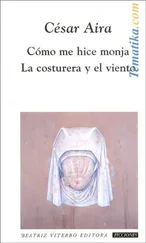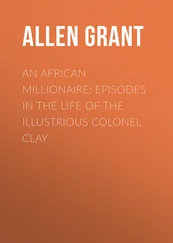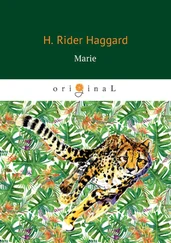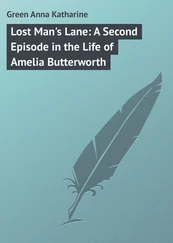Cesar Aira - An Episode in the Life of a Landscape Painter
Здесь есть возможность читать онлайн «Cesar Aira - An Episode in the Life of a Landscape Painter» весь текст электронной книги совершенно бесплатно (целиком полную версию без сокращений). В некоторых случаях можно слушать аудио, скачать через торрент в формате fb2 и присутствует краткое содержание. Год выпуска: 2006, Издательство: New Directions, Жанр: Современная проза, на английском языке. Описание произведения, (предисловие) а так же отзывы посетителей доступны на портале библиотеки ЛибКат.
- Название:An Episode in the Life of a Landscape Painter
- Автор:
- Издательство:New Directions
- Жанр:
- Год:2006
- ISBN:нет данных
- Рейтинг книги:5 / 5. Голосов: 1
-
Избранное:Добавить в избранное
- Отзывы:
-
Ваша оценка:
- 100
- 1
- 2
- 3
- 4
- 5
An Episode in the Life of a Landscape Painter: краткое содержание, описание и аннотация
Предлагаем к чтению аннотацию, описание, краткое содержание или предисловие (зависит от того, что написал сам автор книги «An Episode in the Life of a Landscape Painter»). Если вы не нашли необходимую информацию о книге — напишите в комментариях, мы постараемся отыскать её.
An Episode in the Life of a Landscape Painter
An Episode in the Life of a Landscape Painter — читать онлайн бесплатно полную книгу (весь текст) целиком
Ниже представлен текст книги, разбитый по страницам. Система сохранения места последней прочитанной страницы, позволяет с удобством читать онлайн бесплатно книгу «An Episode in the Life of a Landscape Painter», без необходимости каждый раз заново искать на чём Вы остановились. Поставьте закладку, и сможете в любой момент перейти на страницу, на которой закончили чтение.
Интервал:
Закладка:
Krause undeceived him: that part was real. Those monsters were the poor wretches interned for life in the San Luis hospital. Rugendas was stunned by this, until the onset of the next migraine. What an amazing coincidence! Or correspondence: it suggested that all nightmares, even the most absurd, were somehow connected with reality. He had another memory to recount, different in nature, although related. When they took the stitches out of his face, he was vividly aware of each thread coming loose. And in his addled, semi-conscious state, he felt as if they were removing all the threads that had controlled the puppets of his feelings, or the expressions that manifested them, which came to the same thing. Averting his gaze, Krause made no comment and hastened to change the subject. Which was not so easy: changing the subject is one of the most difficult arts to master, the key to almost all the others. And in this case, change was a key part of the subject.
For Rugendas's face had been seriously damaged. A large scar descended from the middle of his forehead to a piglet's nose, with one nostril higher than the other, and a net of red streaks spread all the way to his ears. His mouth had contracted to a rosebud puckered with furrows and folds. His chin had been shifted to the right, and transformed into one big dimple, like a soup-spoon. This devastation seemed to be irreversible, for the most part. Krause shuddered to think how fragile a face was. One blow and it was broken forever, like a porcelain vase. A character was more robust. A psychological disposition seemed eternal by comparison.
Even so, he might have grown accustomed to that mask, talking to it, waiting for replies, even predicting them. But the worst thing was that the muscles, as Rugendas himself had intuited in his fantasy about the threads, no longer responded to his commands; each one moved autonomously. And they moved much more than normal. It must have been because of the damage to the nervous system. By chance, or perhaps by miracle, this damage was limited to Rugendas's face, but the contrast with his calm trunk and limbs made it all the more striking. The twitching would begin with a slight quiver, a trembling, then spread suddenly and within seconds his whole face was jerking in an uncontrollable St. Vitus's dance. It also changed color, or colors, becoming iridescent, full of violets, pinks and ochres, shifting constantly as in a kaleidoscope.
Viewed from that protean rubber, the world must have looked different, thought Krause. Hallucinations colored not only Rugendas's recent memories but also the scenes of his daily life. On this subject, however, he remained discreet; he must have been still getting used to the symptoms. And no doubt he did not have time to follow a line of thought through to its conclusion, because of the attacks, which occurred once every three hours, on average. When the pain came on, he was possessed, swept away by an inner wind. He hardly needed to explain what was happening: it was all too visible, although he did say that in the grip of an attack he felt amorphous.
A curious verbal coincidence: amorphous, morphine. The drug went on accumulating in his brain. With its help he began to practice his art again, and organized his routine around spells of pain-relief and drawing. In this way he recovered a certain degree of normality. The physiognomic procedure sustained his undiminished skill. The charmingly intimate landscapes of San Luis provided ideal subjects for his convalescent exercises. Nature, in its nineteen vegetal phases, adapted itself to his perception, enveloped with Edenic light: a morphine landscape.
An artist always learns something from the practice of his art, even in the most constraining circumstances, and in this case Rugendas discovered an aspect of the physiognomic procedure that had so far escaped his notice. Namely that it was based on repetition: fragments were reproduced identically, barely changing their location in the picture. If this was not immediately obvious, not even to the artist, it was because the size of the fragments varied enormously, from a single point to a panoramic view (which could greatly exceed the dimensions of the picture). In addition, the fragment's outline could be affected by perspective. As small and as large as the Taoist dragon.
Like so many discoveries, this one seemed at first to be purely gratuitous. But perhaps one day it would have a practical application.
After all, art was his secret. He had conquered it, although at an exorbitant price. He had paid with everything else in his life, so why not the accident and the subsequent transformation? In the game of repetitions and permutations, he could conceal himself even in his new state, and function unseen like any other avatar of the artist. Repetitions: in other words, the history of art.
Why this obsession with being the best? Why did he have to assume that only quality could legitimize his work? In fact, he could hardly even begin to think about it except in terms of quality But what if he was making a mistake? Or indulging in an unhealthy fantasy? Why couldn't he be like everyone else (like Krause, for example), simply painting as well as he could and giving more weight to other things? That kind of modesty could have considerable effects; for a start it would allow him to practice other arts, should he wish… or all of them. His medium could become life itself. The absolutist ambition came from Humboldt, who had designed the procedure as a universal knowledge machine. But that pedantic automaton could be dismantled without giving up the array of styles, each of which was a kind of action.
Within ten days they were back in Mendoza (a journey of one hundred and fifty miles): they rode the same horses along the same route and passed the same carts, accompanied by the same guide and the same cook. The only thing that had changed was Rugendas's face. And the direction. They were slightly delayed by the rain, the wind and the way things looked the same. The Godoy family, notified of the ghastly incident weeks before, renewed their hospitality, but this time they tactfully provided a separate room, where the painter would have more peace and quiet, while still enjoying all the benefits of being in the family's care. His room was perched on the roof; it had once been a lookout, before the trees around the house blocked the view. They could offer him the use of it now because the heat was easing off (it was mid-March); in midsummer, it was a kiln.
Solitude was good for him: he was beginning to cope on his own, and it was a relief to do without Krause for a whole day at a time — not that he was in any way annoyed by the presence of his faithful friend, who was an ideal companion, but because he wanted to leave him in peace, to let him go out and amuse himself in Mendoza after his bedside vigils. He abhorred the thought of being a burden. Secluded in his dovecote, he began to regain his self- esteem, in so far as it was possible.
Those were days of introspection and soul-searching. He had to assimilate what had happened and try to find a viable way forward. He played out internal debates in his correspondence, to which he devoted a great deal of time. He filled pages and pages with his small, compact handwriting. Throughout his life he was a prolific letter-writer: clear, organized, explicit, precise. Nothing escaped him. As his letters have been preserved, there is no shortage of documentary material for his biographers, and although none of them has tried, it would be perfectly possible to reconstruct his travels day by day, almost hour by hour, following every movement of his spirit, every reaction, every scruple. The treasure-trove of his letters reveals a life without secrets, yet somehow still mysterious.
There were two reasons for his feverish activity during those first days in Mendoza. He was behind in his correspondence, since all he had sent from San Luis were a few brief, faltering notes in a shaky hand, containing a bare minimum of information and making promises to elaborate later, which it was now time to fulfill. But he also needed to clarify things for himself and come to terms with the gravity of his situation, and the only means of doing so at his disposal was the familiar practice of letter- writing. That is why there is so much information directly or indirectly related to this episode, concerning not only the events themselves but also their intimate repercussions. The artist's mastery of documentation had carried over to the rest of his life, becoming second nature to the man.
Читать дальшеИнтервал:
Закладка:
Похожие книги на «An Episode in the Life of a Landscape Painter»
Представляем Вашему вниманию похожие книги на «An Episode in the Life of a Landscape Painter» списком для выбора. Мы отобрали схожую по названию и смыслу литературу в надежде предоставить читателям больше вариантов отыскать новые, интересные, ещё непрочитанные произведения.
Обсуждение, отзывы о книге «An Episode in the Life of a Landscape Painter» и просто собственные мнения читателей. Оставьте ваши комментарии, напишите, что Вы думаете о произведении, его смысле или главных героях. Укажите что конкретно понравилось, а что нет, и почему Вы так считаете.
